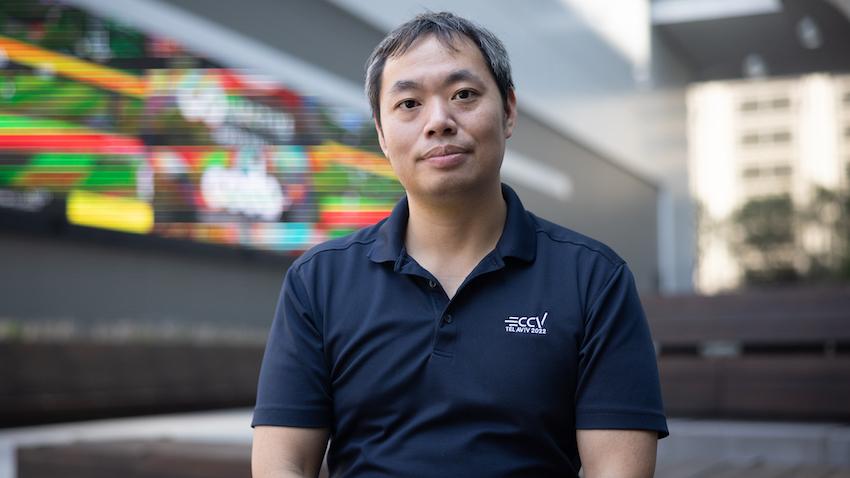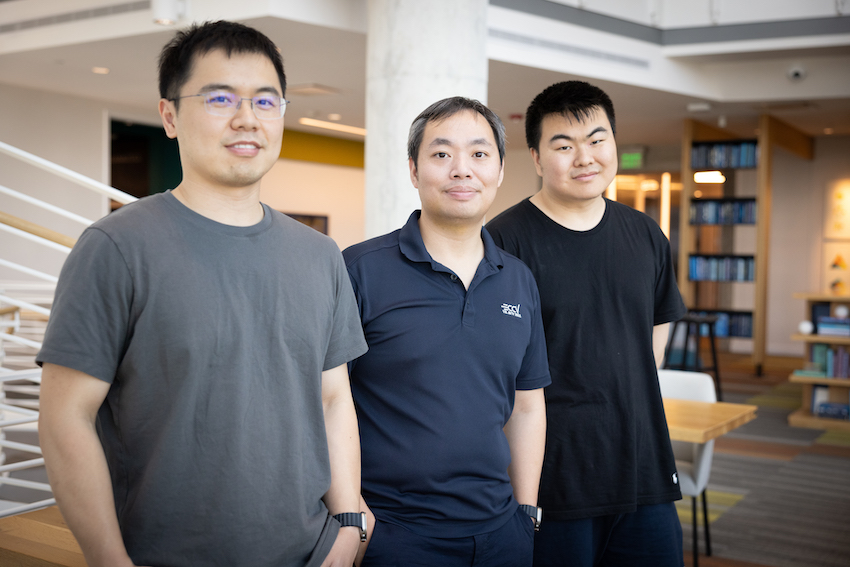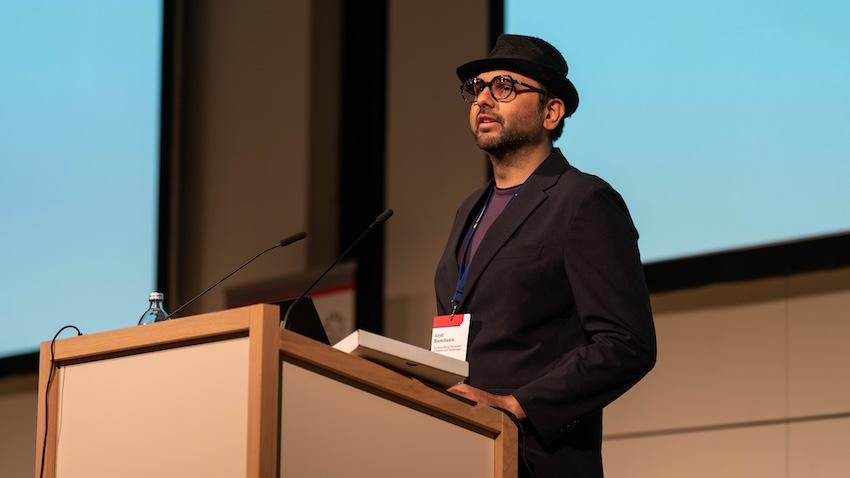
Incoming Associate Professor Takes Holistic View of AI and Computer Vision
Humphrey Shi looks at the world of artificial intelligence (AI) and computer vision from all angles. The goal is to understand, emulate, and interact with the world creatively, efficiently, and responsibly.
Shi, who joins the School of Interactive Computing faculty as an associate professor this fall, comes to Georgia Tech after receiving the NSF CAREER Award in June. The award is one of the highest honors the National Science Foundation gives to early career faculty.
Shi draws from a broad spectrum of research areas in computer science that are applicable across multiple industries. His focus, however, is on multimodal AI, which combines multiple types of data sets such as images, video, audio, geometry, and text to produce more capable AI models and make more accurate predictions about real-world problems.
“The goal is to build a strong AI system that’s better aligned across modalities,” Shi said.
“Current systems present a lot of challenges. If you ask them to generate some images or videos, they give you aesthetical visual outputs, but they don’t often capture the complexity of the real world or the true intent of the user.”
Shi comes to Georgia Tech from the University of Oregon. He served there as an assistant professor from 2019-2023. Before that, he was a researcher at IBM’s T.J. Watson Research Center. He is also a graduate faculty member of the University of Illinois Urbana-Champagne (UIUC), where he earned his master’s and doctoral degrees in electrical and computer engineering. He holds a bachelor’s degree in engineering physics from Tsinghua University in Beijing.
Shi is also a chief scientist at Picsart AI and the founder of Picsart AI Research. In this role, he leads a team of scientists, engineers, and creatives in the innovation and engineering of AI for creative communication.
Shi is teaching Computer Vision (CS 6476) this semester.

What interests you about working at Georgia Tech?
GT has a wonderful selection of students training to be the future generation of technology leaders. I think there’s a unique culture here. People help and support each other, and everyone thrives and focuses on exciting things. There is much to explore about industry entrepreneurship, collaborating with traditional Fortune 500 companies. and emerging opportunities in next-generation life-changing technology.
What will your research consist of?
I like basic research and interdisciplinary collaboration with important applications. I’ve researched core topics in AI and computer vision. I’ve also participated in applied and collaborative research in astronomy, art, agriculture, finance, engineering, science, and medicine. My lab is the SHI Labs, which I use for my name, but in the past, I called it Surpassing Human Intelligence at some point. We are trying to build multimodal AI to augment humans’ capacity to understand, emulate, and interact with the visual world. I’ve started to redefine my lab’s name to Service. Humanity. Innovation. Those three things matter to me.
What inspired you to pursue this field of research?
To interact with the world, we need to understand what‘s happening and, especially visually, what’s in front of us. For example, we need to recognize objects when using computer systems to process information. Whatever happens in the images or a video, we need to recognize activities to understand events. Over 50% of information that people absorb is visual information.
What do you hope to accomplish in your research?
Things are happening in AI every day. However, there’s still a gap between many key research areas and how technology can be applicable, beneficial, and safe, and I want to do those things here. I hope we can advance technologies, make them more accessible to the world, and train the aspiring young researchers in our lab to be the next-generation technology leaders who can change the world for the better.
What are you looking forward to about teaching your students and how do you plan on working with them?
There’s a lot of advancement in multimodal AI and computer vision. I look forward to integrating these advances, along with my findings into the Computer Vision course so students will be exposed to cutting-edge AI. AI is a key topic for everyone. By teaching them the proper way, they can better understand how AI research and technology are evolving so they can navigate it through their careers in this exciting time of change for AI and Humanity.


